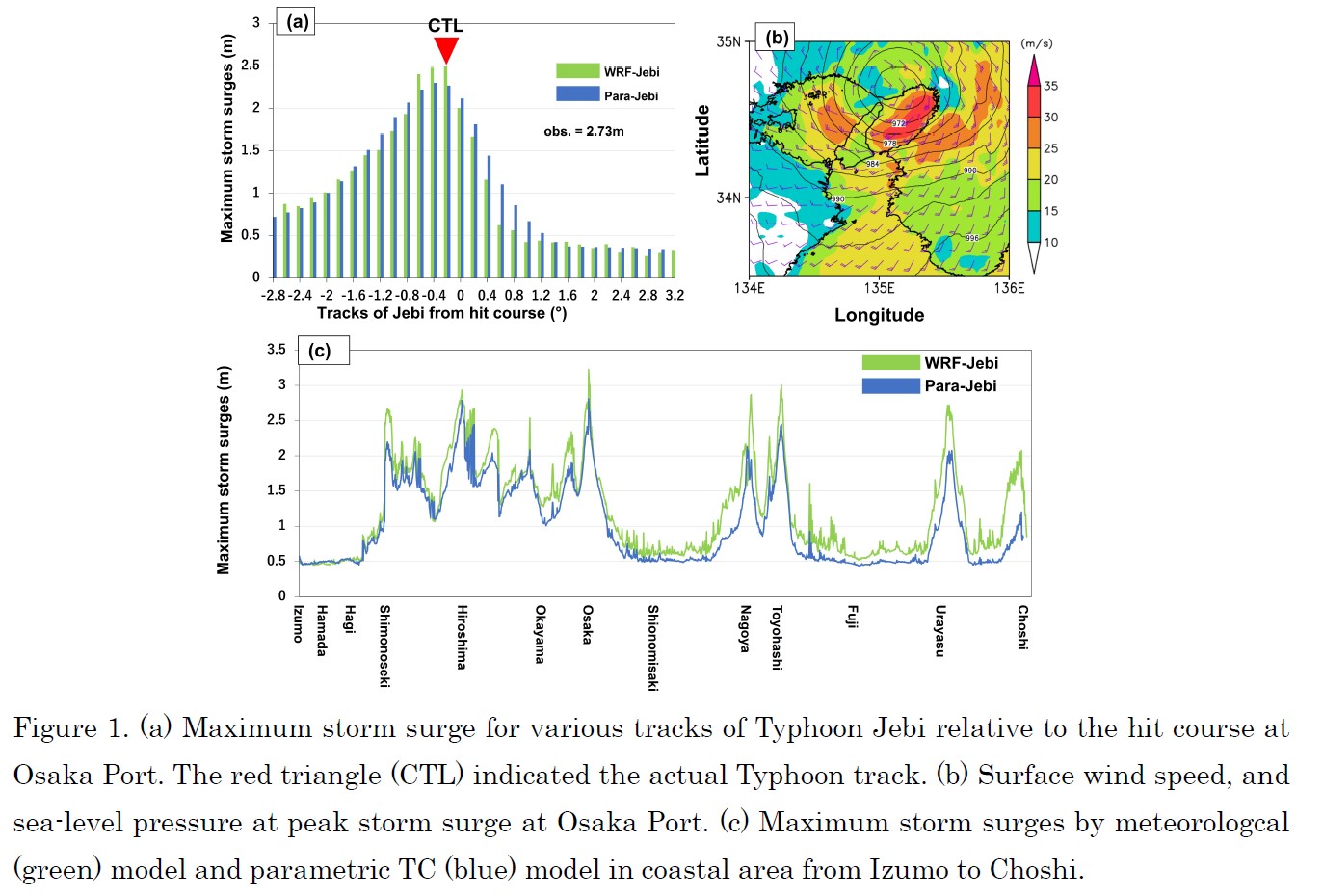Graphical Abstract
Otaki, T., H, Fudeyasu, N. Khono, T. Takemi, N. Mori, and K. Iida, 2022: Investigation of characteristics of maximum storm surges in Japanese coastal regions caused by Typhoon Jebi (2018) based on typhoon track ensemble simulations. J. Meteor. Soc. Japan, 100, 661-676.
Special Edition on Typhoons in 2018-2019
https://doi.org/10.2151/jmsj.2022-034
Graphical Abstract
Plain Language Summary: This study estimated the maximum storm surges on the coast of Japan caused by Typhoon Jebi using the JMA storm surge model in conjunction with simulations based on the meteorological (WRF-Jebi) model and parametric TC (Para-Jebi) model. The storm surge at Osaka Port was estimated more accurately by the WRF-Jebi model than the Para-Jebi model. The typhoon track ensemble simulations demonstrated that the maximum storm surge was dependent on perturbation of the track of Typhoon Jebi along the entire coast of the Japanese Islands.
Highlights:
- In coastal areas where larger maximum storm surges were estimated, the longitudinally perturbed “worst-case course” appeared 0.4–0.8º west or east of the “hit course” (Fig. 1a), indicating that the wind setup effect was an important factor in the maximum storm surge.
- The differences between WRF-Jebi model and Para-Jebi model were due to a “wind setup effect,” where the topography enhanced surface winds over Osaka Bay (Fig. 1b).
- It is important to estimate the maximum storm surges and worst-case courses at all coastal area (Fig. 1c) because this will provide important information disaster prevention and risk management.







